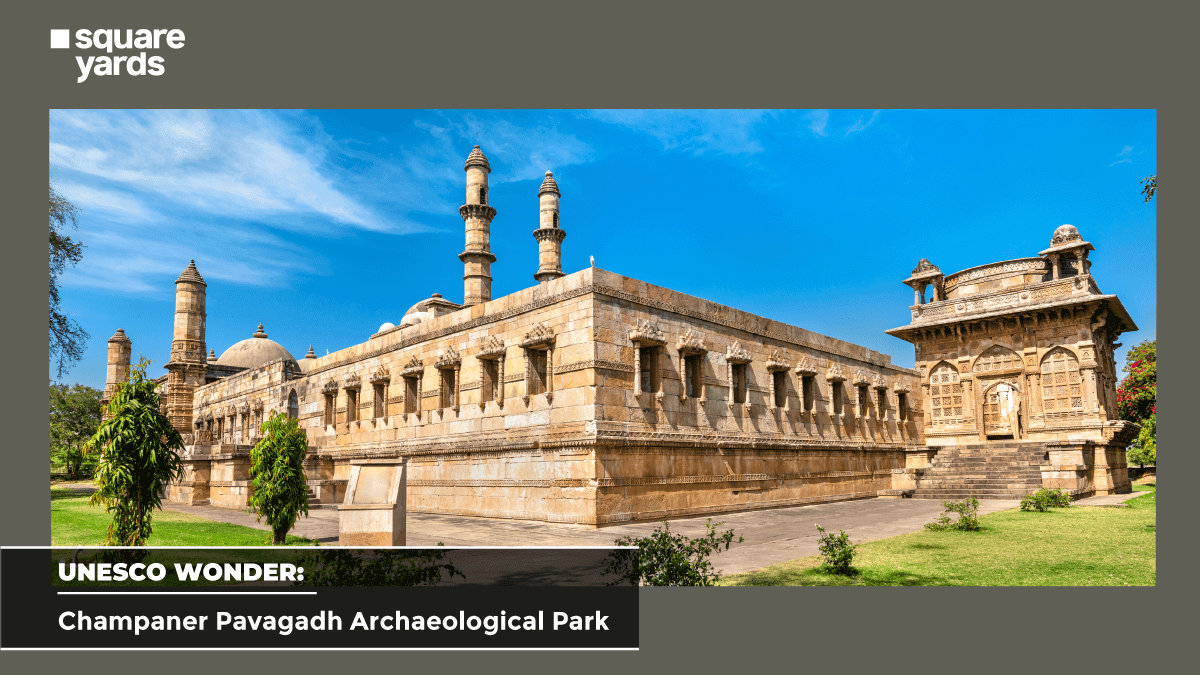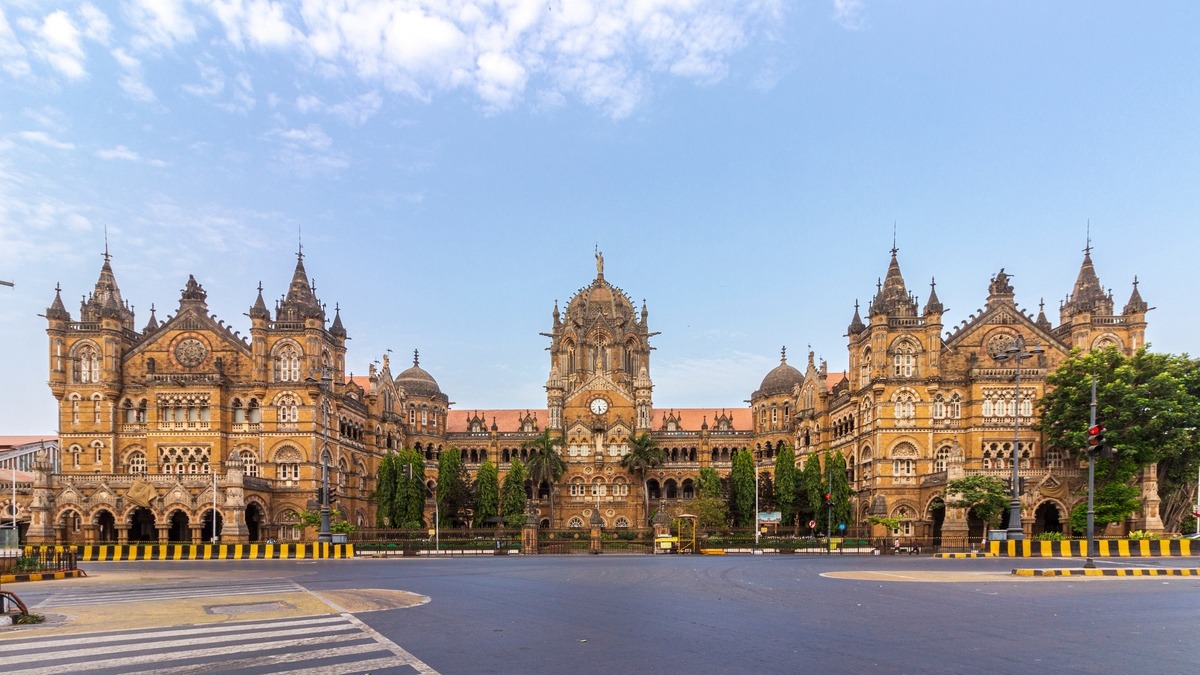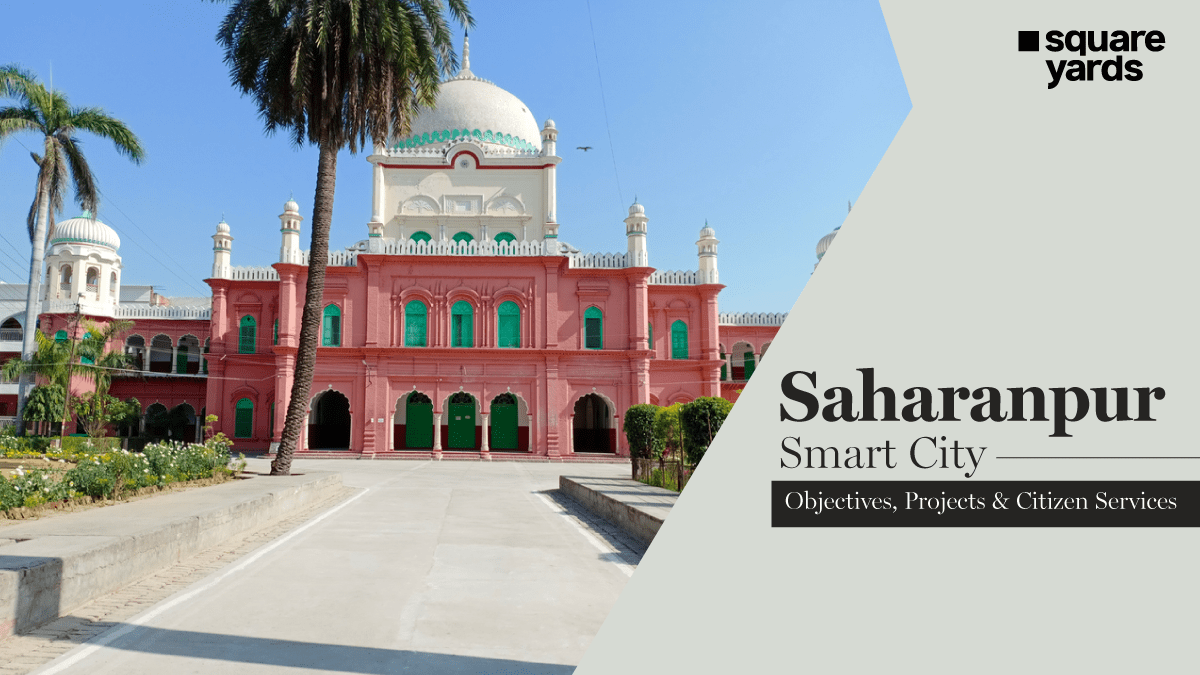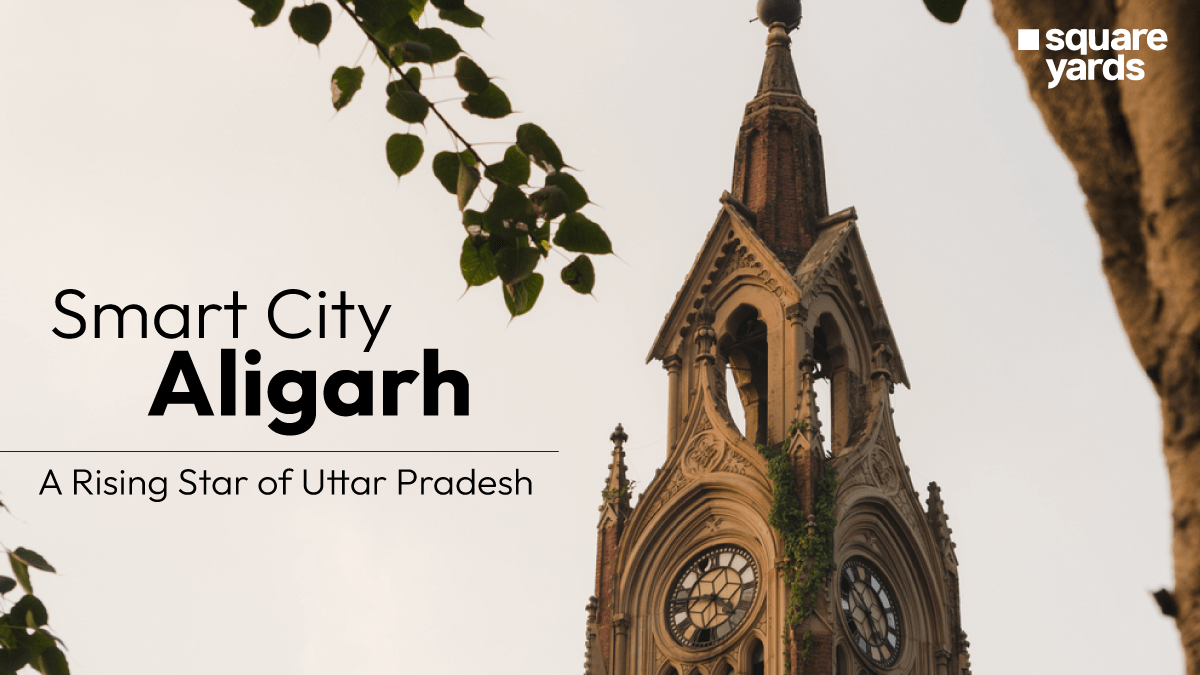The UNESCO World Heritage Site Champaner-Pavagadh Archaeological Park is in India, Gujarat’s Panchmahal district. It is centred on the historical town of Champaner, which was created in the 8th century by Vanraj Chavda, the notable ruler of the Chavda Dynasty. He named the city after his ally, Anhil Bharvad, and commander Champa which later became Champaraj.
It originated from the Pavagadh hills and reached Champaner city, the UNESCO site with castles and shining beacons. The park’s topography comprises archaeology, historical and other living cultures, and artefacts like chalcolithic structures. Generally, it is an early Hindu metropolis’s hill castle and the foundations of Gujarat’s 16th-century city.
From the seventh to the fourteenth centuries, there were buildings, gateways, towers, mosques, temples, apartment buildings, agricultural constructions, and water systems. However, with modern infrastructure, the scenery is declining.
The Kalika Mata Temple is situated just on top of the 800 meters, 2,600 feet high Pavagadh Hill. It is a major Hindu temple in the area that attracts many tourists every year.
In the late 15th to early 16th-century, parkland documented the movement between Hindu and Muslim architectural styles, especially the early Islamic and pre-Mughal cities, which have barely changed. In 2004, UNESCO designated it as a World Heritage Site.
History of Champaner- Pavagadh Archaeological Park
The Champaner-Pavagadh Archaeological Park has witnessed numerous occurrences. It has seen ages of kings battling for power and eventually relinquishing it. The city was named after Ahilwada’s Vanaraj Chavda (746 to 806 AD). Until 400 AD, it was uninhabited. The city was governed by Allaudin Khilji, Chauhan Rajputs, Solanki Kings, and Khichi Chauhans. It was a moment of growth and prosperity when Mehmud Begda restored it as the capital of a dynasty. The territory was virtually destroyed when Mughal Emperor Humayun raided it in the 16th century.
In 1803, the site was revitalized after British explorers discovered it. Due to a lack of money, the Baroda Heritage Trust sought but failed to restore the grandeur. UNESCO classified the city and its monuments as a World Heritage Site, averting the region’s utter destruction.

Insight Architecture of Champaner-Pavagadh Park
Champaner-Pavagadh Archaeological Park consists of ancient tombs and temples from the primaeval past found in the park. It’s a combination of Hindu, Jain, mosques, and other historical buildings.
Furthermore, it is a Hindu pilgrimage site, and at a height of around 800 meters above sea level. Pavagadh hill is also one of the country’s oldest rock formations. Champaner-Pavagadh Archaeological Park is one of the shining examples of rich Indian civilisation, spanning 3300 acres with a boundary of 700 acres. Additionally, the earliest artefacts of this archaeological park are the temple’s ‘antarala’ and ‘gudhamandapa,’ which are still present from the 10th century. Besides the 13th to 15th centuries, several Jainism and Hinduism temples are recognized and found in the Nagara design style.
Some of the archaeological park’s ancient monuments include a line of defences that stretch from the meadows to Pavagadh’s peak. These castles have magnificent forts in the middle with verandahs. The Jama Masjid, situated within the park grounds, is an excellent instance of Hindu-Muslim design.
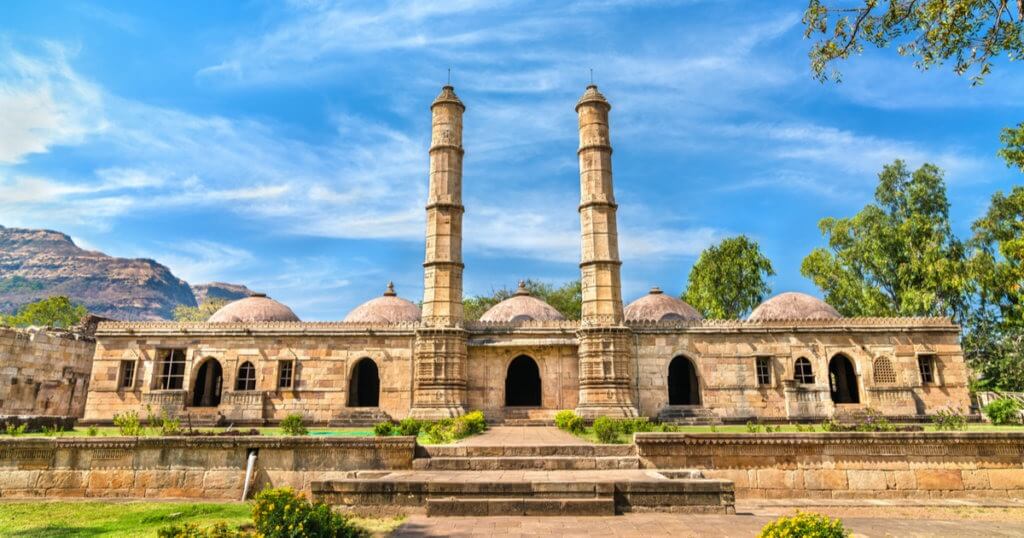
How to Reach Champaner-Pavagadh Archaeological Park?
The Champaner-Pavagadh Archaeological Park in Gujarat contains an old castle, several military fortifications, temples, and water systems. The capital region of Mahmud Begda’s dominion was made up of these places. However, there are various facilities to reach Champaner-Pavagadh Archaeological Park, such as:
● The nearest airport is in Vadodara, 42 km away from Champaner. The domestic airport is connected to many cities in India. From the airport, you can opt for taxis, buses, and private vehicles that would take approximately about one hour to reach the city of Champaner. Moreover, the nearest international airport is in Ahmedabad, about 145 km away for foreign tourists.
● The nearest railway station is located in Vadodara Railway Station, 53 km, and Champaner has its railhead.
● You can also travel to Vadodara by road, which has good connectivity with major Indian cities via NH-8. However, from Vadodara, one can take buses to Champaner- Pavagadh Archaeological Park.
Location and Timings of the Champaner-Pavagadh Archaeological Park
The Champaner-Pavagadh Archaeological Park is among the most spectacular destinations to visit in Gujarat, with various undiscovered archaeological sites. The Park is constructed on the foundations of Mehmud Begda’s 16th-century capital city, and it provides a fascinating glimpse into the architectural design of the time.
On top of the Pavagadh Hill, Kalika Mata Temple is located, and Jama Masjid is also situated on Champaner-Pavagadh Archaeological Park with two other most famous attractions.
Entry Fee: INR 10 per person
Location: Panchmahal District, Gujarat, India
Timings: 08.30 AM to 05.00 PM from Monday to Sunday
Best time to visit: Champaner-Pavagadh Archaeological Park, the best time to visit would be:
Summer: March – September
Winter: October to February
Facts About: Champaner-Pavagadh Archaeological Park
Mosques, temples, monuments, graves, wells, walls, and hillsides are among the eleven types of structures found at Champaner-Pavagadh. The memorials are situated in the centre of Pavagadh hill and the surrounding area.
Due to a lack of funds, the Department of Archaeology Council of India maintains only 39 artefacts in the area, according to the Heritage Trust of Baroda. The Forest Service holds 94% of the property in this area. Some facts about the Champaner-Pavagadh Archaeological Park are as follows:
● The Champaner-Pavagadh Archaeological Park is situated in Gujarat’s Panchmahal district.
● It encompasses the ancient city of Champaner, a city built by Sultan Mahmud Begada of Gujarat.
● Pavagadh was built out of a reddish-yellow tinted stone.
● It’s one of India’s most ancient igneous rocks.
● From the mean sea level, the hill reaches a height of almost 800 meters.
● The Solanki monarchs of Gujarat, followed by the Khichi Chauhans, built Pavagadh Hill, a notable Hindu stronghold.
● In 1484, Sultan Mahmud Begarah gained control of the fort and called it Muhammadabad.
● These artefacts may be found on the Mauliya mountain range, which lies atop a hill.
● Only the gudhamandapa and antarala remain from the first temple, probably dating from the 10th to 11th centuries, attributed to Lakulisa.
● Other buildings are dated from the 13th to 15th century A.D. and belonged to the Hindu and Jain religions.
● Most buildings have garbhagriha, mandapa, and an entryway hall in the Nagara design.
● A collection of structures makes up the historical buildings in Champaner.
● Enormous sandstones make up the structure, surrounded by intermediary strongholds with a lovely balcony. Five mosques remain in excellent condition among the vast wrecks.
● The Jama Masjid, placed 50 meters east of the royal courtyard, is the most prominent mosque.
● In 2004, it was designated as an ancient excavation.
You May Also Like
Conclusion
In a nutshell, a world heritage site in Gujarat, Champaner-Pavagadh Archaeological Park, is located in the Panchmahal district in Gujarat, India. It is located around the historical city of Champaner, a city originally built by Sultan Mahmud Begada of Gujarat. The Pavagadh hill is made up of reddish-yellow-coloured stone formations, one of India’s oldest rock formations. The hill rises to nearly 800 meters from the mean sea level.
FAQs
Why is Champaner-Pavagadh Archaeological Park famous?
Champaner-Pavagadh Archaeological Park is famous for its Mosques, temples, granaries, tombs, wells, walls, and terraces.
Who built Champaner-Pavagadh Archaeological Park?
The castle established by the Solanki monarchs of Gujarat, Sultan Mahmud Begadah, was strengthened by the Khichi Chauhans.
How old is Champaner-Pavagadh Archaeological Park?
The Champaner Pavagadh Archeological Park consists of monuments and buildings since, 8th to 14th centuries.
Is Champaner and Pavagadh same?
No, these are not the same, but they are located nearby, around 1.6 km away from each other.


